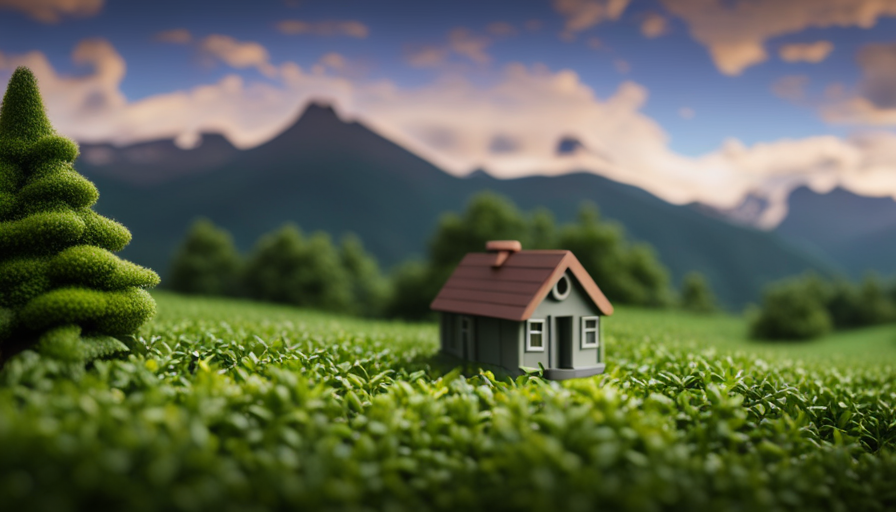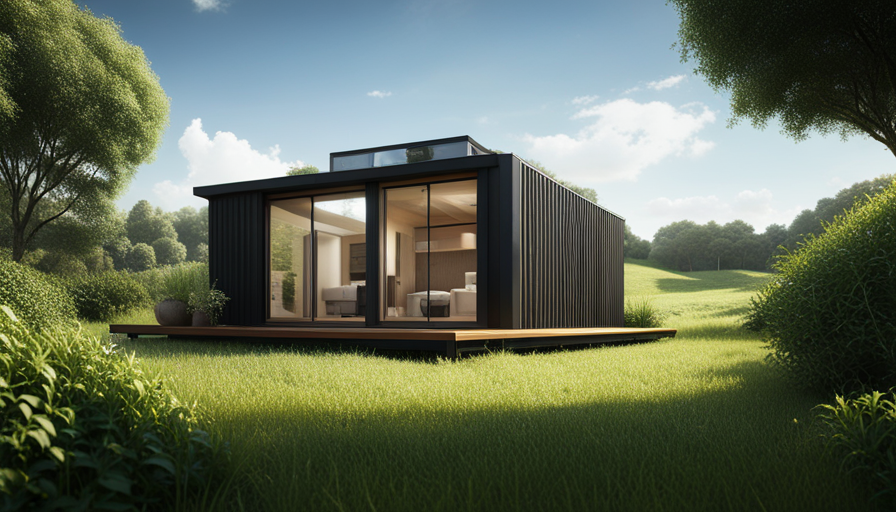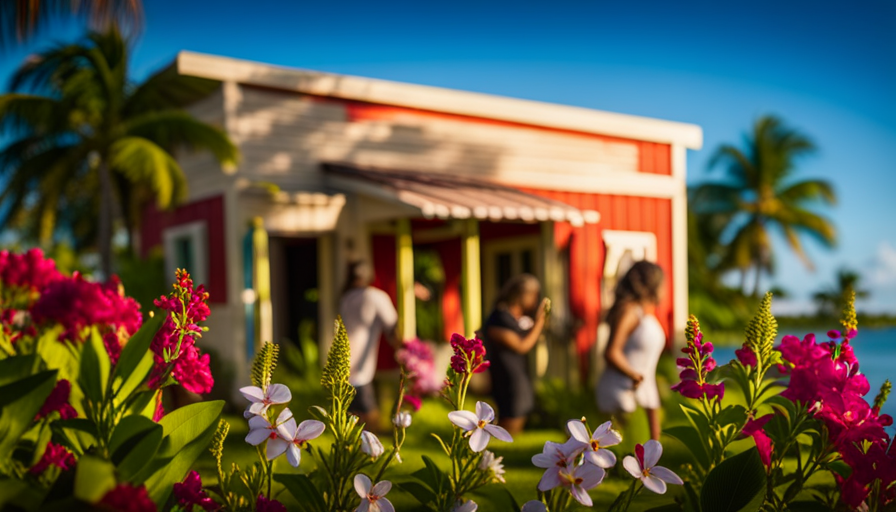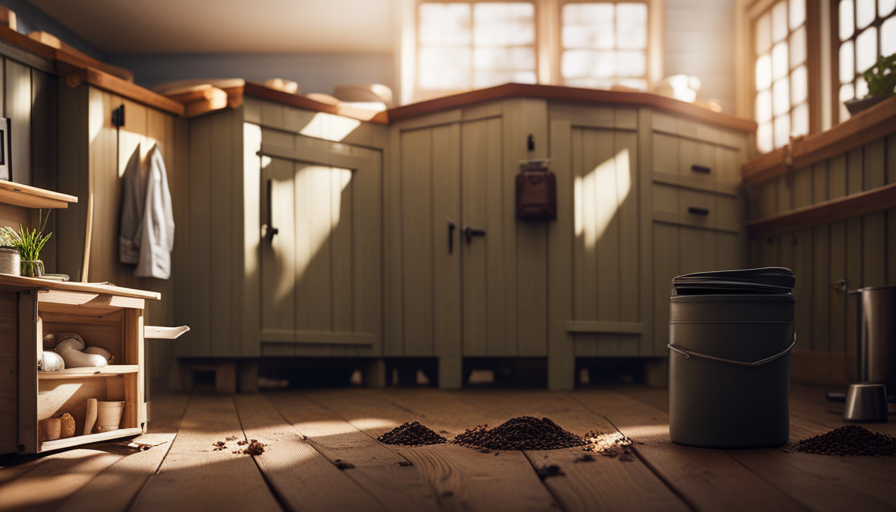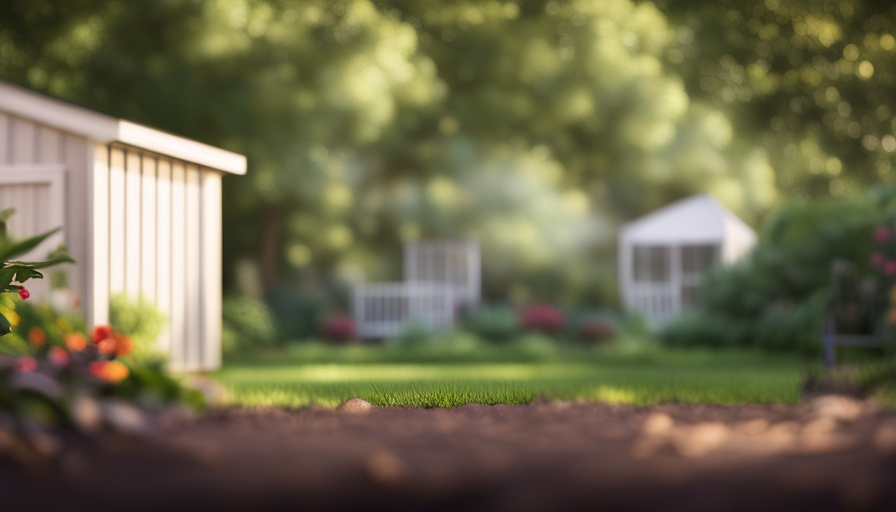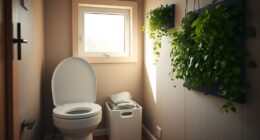Have you ever dreamed of designing a cozy retreat that complements your minimalist lifestyle? A tiny house might be the perfect solution. Serving as a small sanctuary, these humble homes offer simplicity, affordability, and a chance to adopt a minimalist way of living.
But before you embark on this unique housing adventure, it’s crucial to understand the costs involved. In this article, we will delve into the question, ‘How much does it cost for a tiny house?’ We will explore the expenses associated with building or buying a tiny house, financing options, additional expenses to consider, ways to save money, and the long-term cost savings of living in a tiny house. We will also touch upon insurance and legal considerations, the resale value of a tiny house, and how to make a budget for your tiny house journey.
So, let’s dive in and uncover the financial aspects of turning your tiny house dream into a reality.
Key Takeaways
- Costs of building or buying a tiny house can vary depending on size, location, and materials used.
- Financing options include paying out of pocket, loans, or crowdfunding.
- Hidden expenses during the building process can include permits, inspections, and utility connections.
- Buying a pre-built tiny house saves time and effort, but can be more expensive and limit customization options.
The Price of Building a Tiny House
If you’re looking to build a tiny house, you’ll be pleased to know that the cost can vary depending on factors such as size, location, and materials used. When it comes to financing options, there are several routes you can take.
Some people choose to pay for the construction of their tiny house out of pocket, while others opt for loans or crowdfunding platforms. It’s important to carefully consider your financial situation and explore all available options before making a decision.
Additionally, it’s crucial to be aware of hidden expenses that can arise during the building process. These can include permits, inspections, and utility connections, which can significantly impact your overall budget. By thoroughly researching and planning for these potential costs, you can avoid any unpleasant surprises down the line.
In the next section, we’ll delve into the cost of buying a pre-built tiny house, which offers its own set of considerations and financial implications.
The Cost of Buying a Pre-Built Tiny House
Purchasing a pre-built tiny home can be a significant investment that triggers a mix of excitement and anticipation. When considering the cost of buying a pre-built tiny house, it’s important to weigh the pros and cons.
One advantage of buying a pre-built tiny house is that it saves time and effort. Instead of spending months or even years building a tiny house from scratch, you can move into a pre-built one almost immediately. Additionally, pre-built tiny houses often come with warranties, ensuring that any construction issues will be addressed by the manufacturer.
However, there are also some drawbacks to buying a pre-built tiny house. The cost can be higher compared to building your own, as you’re paying for the convenience and expertise of professionals. Furthermore, customization options may be limited, as pre-built tiny houses are usually designed with a specific layout and style.
When it comes to financing options for a pre-built tiny house, there are various choices available. Some companies offer in-house financing, allowing you to make monthly payments. Alternatively, you can explore traditional mortgage options or even consider personal loans.
As we delve into the next section about financing options for a tiny house, it’s crucial to consider the financial implications of purchasing a pre-built tiny home.
Financing Options for a Tiny House
Consider exploring different financing options to help you bring your dream of owning a tiny home closer to reality. When it comes to tiny house financing, there are several loan options available to consider.
One option is to secure a personal loan from a bank or credit union. This type of loan can provide you with the funds needed to purchase or build your tiny house.
Another option is to look into RV loans, as many tiny homes are classified as recreational vehicles. These loans typically have lower interest rates and longer repayment terms, making them a favorable choice for many tiny house enthusiasts.
Additionally, some individuals may choose to take out a home equity loan or line of credit to finance their tiny house. This option allows homeowners to borrow against the equity they have built up in their current property.
It’s important to carefully consider the terms and interest rates associated with each financing option to ensure that it aligns with your financial goals and capabilities. By exploring these different financing options, you can find the most suitable solution for your tiny house journey.
As you move forward, it’s also essential to consider additional expenses that may arise during the process.
Additional Expenses to Consider
To fully prepare for your tiny house journey, you’ll want to be aware of the various additional expenses that can arise along the way – expenses that might surprise you. Did you know that on average, tiny house owners spend around $2,000 per year on maintenance and repairs, ensuring their cozy homes stay in tip-top shape? These additional expenses go beyond the initial cost of building or buying a tiny house, and it’s important to budget for them accordingly.
One additional expense to consider is storage solutions. With limited space in a tiny house, it’s essential to find creative ways to maximize storage. This might involve investing in space-saving furniture, utilizing wall-mounted shelving, or even renting off-site storage for seasonal items. These storage solutions can add to the overall cost of your tiny house project.
Another important factor to consider is zoning regulations. Depending on where you plan to park your tiny house, you may need to comply with specific zoning regulations. This could involve obtaining permits, paying fees, or even finding alternative parking arrangements. It’s crucial to research and understand the zoning regulations in your desired location to avoid any unexpected expenses or complications.
There are several additional expenses to consider when embarking on a tiny house journey. From maintenance and repairs to storage solutions and zoning regulations, these costs can add up. However, with careful planning and budgeting, you can navigate these expenses and enjoy the benefits of tiny house living. In the next section, we will explore ways to save money on a tiny house without compromising on quality.
Ways to Save Money on a Tiny House
When it comes to saving money on a tiny house, there are a couple of key points to consider. First, DIY construction and customization can significantly reduce costs. By taking on the construction yourself, you can save on labor expenses and have the freedom to customize the design to fit your specific needs.
Additionally, buying used or repurposed materials can also help to lower costs. By finding materials secondhand or repurposing items, you can save money while still maintaining the quality and functionality of your tiny house.
DIY construction and customization
If you’re looking to create your own unique space, you can let your imagination run wild with DIY construction and customization for your tiny house. DIY design ideas offer endless possibilities for personalizing your space.
From creating multi-functional furniture to incorporating unique storage solutions, you can truly make your tiny house reflect your personality and lifestyle. Not only does DIY construction allow you to customize every aspect of your tiny house, but it can also be a cost-effective option. By using cost-effective building materials, such as reclaimed wood or recycled materials, you can save money while still achieving a high-quality finish.
Additionally, DIY construction allows you to have full control over the entire building process, ensuring that every detail is exactly how you envision it.
Now, let’s explore another way to save money on your tiny house – buying used or repurposed materials.
Buying used or repurposed materials
Utilizing secondhand or repurposed materials for your tiny home project adds a touch of elegance while keeping costs low. When considering the construction of a tiny house, the choice between repurposing and recycling materials is an important one.
Repurposing involves taking materials that were originally intended for one purpose and giving them new life in your tiny house. This can include using old barn wood for flooring or turning an old bathtub into a unique sink. On the other hand, recycling involves breaking down materials and using them to create new ones.
While both options have their benefits, repurposing is often the more cost-effective choice. By finding and reusing materials, you can save money while still achieving a high level of craftsmanship in your tiny home. However, it is important to carefully consider the quality and condition of repurposed materials to ensure they meet your needs.
As you move forward with your tiny house project, keep in mind that hidden costs can arise, and I’ll discuss these further in the subsequent section.
Hidden Costs of Living in a Tiny House
When it comes to living in a tiny house, there are hidden costs that often get overlooked. Two of these key points are storage solutions and organization, as well as potential zoning and legal issues.
Finding efficient storage solutions and staying organized is crucial in a small living space, and it can require additional expenses to maximize the available space.
Additionally, zoning and legal issues can arise when it comes to parking or living in a tiny house, which may require extra research or even legal assistance.
Storage solutions and organization
You’ll be amazed at how much you’ll save on storage solutions and organization in your tiny house, because who needs all that extra space anyways?
When it comes to storage solutions, the key is space optimization. Every inch counts in a tiny house, so it’s important to make the most of every nook and cranny. From utilizing vertical space with wall-mounted shelves and hooks to incorporating multi-functional furniture with hidden storage compartments, there are endless possibilities for maximizing storage in a tiny house.
Additionally, implementing clever organization systems, such as collapsible bins and magnetic strips, can help keep everything in its place and prevent clutter. By efficiently utilizing the available space and investing in smart storage solutions, you’ll not only save money but also create a more organized and functional living environment.
Now, let’s delve into the potential zoning and legal issues that may arise when living in a tiny house.
Potential zoning and legal issues
To navigate the potential zoning and legal issues, it’s crucial to understand the regulations and restrictions that may arise when living in a compact space. When it comes to tiny houses, there can be a variety of zoning challenges that homeowners may face.
Some areas may have minimum square footage requirements, which may make it difficult to legally live in a tiny house. Additionally, zoning regulations may restrict where a tiny house can be parked or placed, limiting potential locations.
Legal restrictions can also come into play, such as requirements for permits or licenses, and compliance with building codes. Understanding and following these regulations is essential to avoid penalties or fines.
By carefully researching and adhering to zoning and legal requirements, individuals can ensure a smoother transition into the world of tiny house living. This understanding will also lay the foundation for exploring the long-term cost savings of living in a tiny house without compromising on comfort or style.
Long-Term Cost Savings of Living in a Tiny House
Living in a tiny house can be a game-changer for your budget, as it offers significant long-term cost savings compared to traditional homes. The financial advantages of living in a tiny house are numerous and can have a lasting impact on your financial well-being.
One of the main cost benefits of living in a tiny house is the reduced utility bills. With a smaller space to heat, cool, and power, the monthly expenses for utilities can be significantly lower. Additionally, the maintenance costs for a tiny house are generally lower than those of a traditional home. With fewer square footage to clean, repair, and maintain, you can save both time and money.
Another major advantage is the reduced property taxes. Tiny houses are typically considered personal property rather than real estate, which means the property taxes are often much lower. This can result in substantial savings over time.
Lastly, living in a tiny house allows for more financial freedom. With a smaller mortgage or no mortgage at all, you can allocate your money towards other financial goals, such as saving for retirement or traveling.
The long-term cost savings of living in a tiny house are undeniable. From lower utility bills and maintenance costs to reduced property taxes and increased financial flexibility, a tiny house can provide significant financial advantages. Next, let’s explore the insurance and legal considerations for tiny houses.
Insurance and Legal Considerations for Tiny Houses
Navigating the legal and insurance aspects of owning a tiny house can be a complex yet crucial step in ensuring your investment is protected and in compliance with regulations.
When it comes to insurance considerations, it’s important to understand that traditional homeowners’ insurance policies may not cover a tiny house due to its unique nature. However, specialized tiny house insurance policies are available that can provide coverage for the structure, belongings, and liability.
Before purchasing insurance, it’s essential to check with local authorities to understand the legal requirements for owning a tiny house in your area. Building codes, zoning regulations, and permits may vary from place to place, and it’s crucial to comply with these rules to avoid legal issues. Some areas may require your tiny house to be permanently affixed to a foundation or designated as a recreational vehicle (RV).
In addition to insurance and legal requirements, it’s also important to consider the potential resale value of a tiny house. Factors such as location, size, design, and overall condition can influence the value of your tiny house if you decide to sell it in the future.
Transitioning to the next section, understanding the insurance and legal considerations is fundamental, but it’s also important to consider the potential resale value of a tiny house.
Resale Value of a Tiny House
When considering the resale value of a tiny house, there are several factors that can have a significant impact. Factors such as the location, size, design, and overall condition of the tiny house can all affect its resale potential.
To maximize resale potential, it’s important to consider factors such as market demand, staying up-to-date with current design trends, and ensuring proper maintenance and upkeep of the tiny house.
Factors that affect resale value
One key factor that can greatly impact the resale value of a tiny house is its overall condition. The condition of the house plays a significant role in attracting potential buyers and determining the price it can fetch on the market. Factors influencing demand include the quality of construction, the age of the house, and any visible wear and tear.
Additionally, the location of the tiny house also affects its resale value. A house situated in a desirable and convenient area is more likely to have a higher resale value compared to one in a remote or less desirable location. Other factors that can influence resale value include the availability of amenities, the neighborhood’s reputation, and the overall market conditions.
By considering these factors, homeowners can maximize the resale potential of their tiny houses.
Tips for maximizing resale potential
To truly unlock the full resale potential of your cozy abode, think of it as a blank canvas waiting for its new owner to infuse it with their own unique charm and personality.
One of the key factors in maximizing curb appeal is ensuring that your tiny house is visually appealing from the outside. Consider adding fresh paint, updating the landscaping, and investing in quality exterior finishes.
Inside, staging techniques can make a huge difference. Keep the space clean, clutter-free, and well-organized. Use neutral colors and minimal furniture to create an open and inviting atmosphere. Additionally, consider adding small touches like fresh flowers or scented candles to add a welcoming ambiance.
By paying attention to these details, you can greatly increase the overall resale value of your tiny house.
As you prepare to embark on your tiny house journey, it’s important to make a budget that aligns with your goals and resources, ensuring a smooth and successful transition.
Making a Budget for Your Tiny House Journey
Creating a budget for your tiny house journey is an exciting opportunity to plan for the costs involved. As you embark on this adventure, it’s important to consider various factors that will impact your budget.
Here are some key points to keep in mind:
-
DIY Construction Tips: Building your own tiny house can save you a significant amount of money. Consider learning basic construction skills or enrolling in workshops to acquire the necessary knowledge. This will enable you to tackle many aspects of the construction process on your own, reducing labor costs.
-
Finding Affordable Land Options: Land prices can vary greatly depending on location. Research areas where land prices are more affordable and explore options such as purchasing a small plot or leasing land. Additionally, consider alternative land options like cooperative communities or renting space in someone else’s backyard.
-
Material Costs: Carefully consider the type and quality of materials you plan to use for your tiny house. While it’s important to ensure durability and safety, there are often cheaper alternatives available that don’t compromise on quality.
-
Utilities and Off-Grid Options: Plan for the costs of utilities such as electricity, water, and sewage. Explore off-grid options like solar power or rainwater collection systems, which can help reduce your monthly expenses.
-
Permits and Regulations: Research the permits and regulations in your area to understand any associated costs. Some areas may require inspections or fees for building a tiny house.
By considering these factors and creating a detailed budget, you can better plan for the costs involved in your tiny house journey.
Frequently Asked Questions
Are there any zoning regulations or legal considerations to be aware of when building or buying a tiny house?
Navigating through the realm of tiny house living requires a keen understanding of zoning regulations and legal considerations. From local building codes to land use restrictions, it’s essential to be well-informed to ensure a smooth journey into the tiny house lifestyle.
What are the insurance options for a tiny house, and how much does it typically cost?
Insurance options for tiny houses include homeowners insurance, RV insurance, and specialized tiny house insurance. The average cost of insurance for tiny houses varies depending on factors such as location, size, and value of the house.
How does the resale value of a tiny house compare to traditional homes?
The resale value of a tiny house compared to traditional homes depends on various factors. However, due to the increasing popularity of tiny houses and their unique appeal, they often have a higher resale value than expected.
What are some unexpected or hidden costs that people often overlook when living in a tiny house?
Hidden costs and maintenance expenses are often overlooked when living in a tiny house. These can include regular repairs, utility hookups, insurance, and land rental fees. It’s important to budget for these additional expenses to avoid unexpected financial burdens.
What are some common financing options for purchasing a pre-built tiny house?
When considering financing options for purchasing a pre-built tiny house, it is important to research and understand building regulations in your area. This will ensure compliance and avoid any unexpected costs or issues down the line.
Conclusion
In conclusion, after thoroughly researching the cost of tiny houses, I’ve come to realize that they offer a unique and affordable housing option. The price of building a tiny house can vary depending on factors such as size, materials, and location. However, buying a pre-built tiny house might be a more convenient and cost-effective choice for some.
By exploring financing options and considering additional expenses, you can make a well-informed decision. Ultimately, living in a tiny house can lead to long-term cost savings and a simpler way of life.
When it comes to insurance, legal considerations, and resale value, it’s crucial to do thorough research. By making a budget and planning ahead, you can embark on your own tiny house journey and create a cozy and economical home.
Hi, I’m Emma. I’m the Editor in Chief of Tiny House 43, a blog all about tiny houses. While tree houses are often associated with childhood, they can be the perfect adult retreat. They offer a cozy space to relax and unwind, surrounded by nature. And since they’re typically built on stilts or raised platforms, they offer stunning views that traditional homes simply can’t match. If you’re looking for a unique and romantic getaway, a tree house tiny house might just be the perfect option.
